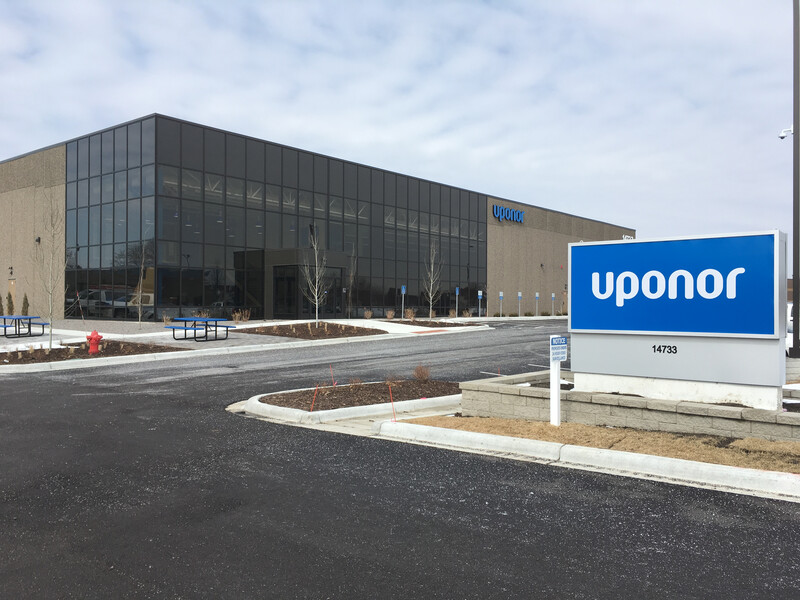Valuable metals leach efficiently from the enormous heap in Talvivaara,
Sotkamo, Finland,
Finland
Valuable metals leach efficiently from the enormous heap in Talvivaara
Talvivaara's mining project is transforming a coniferous swamp in the province of Kainuu, Finland. The nickel mine constructed in Sotkamo uses a leaching method that is unique in Europe and requires an enormous amount of durable pipe material for its structures.
The mine, which is located in the municipality of Sotkamo, Finland, guarantees a large amount of work, as well as valuable metals. Finland's largest nickel deposits were discovered there decades ago. The mine began operating commercially in 2009.
The method was developed by Talvivaara Project and is being used for the first time in these conditions. It has several benefits.
It separates nickel from low-concentration ores more profitably than traditional processes such as autoclave leaching. Nickel is separated from bedrock using bioleaching, a process in which valuable metals are dissolved from crushed rock using water and bacteria.
Low-grade ore is also suitable for this process
The ore from the open quarry in the middle of the forest contains nickel, zinc, copper and cobalt. However, the ore is low-grade – it has low concentrations of valuable metals.
The basic work phases of biological heap leaching – crushing, heaping and leaching – are relatively cheap. This enables work to be carried out on ores without high concentrations of valuable metal. "This method is used extensively in South America and also to some extent in Asia. The project is unique in the Nordic countries and I do not know of any comparable projects underway anywhere in Europe," says Lassi Lammassaari, Vice President of Mining Operations and Infrastructure at Talvivaara Project.
Looking ahead, the greatest uncertainty factor is the effect of Arctic conditions on the process. The Nordic climate affects planning. However, heap leaching is carried out in the mountains of Chile, up to four kilometres above sea level and at temperatures a few degrees below zero. "In the trial area, the heap has retained heat effectively. Even very low temperatures have not put a stop to the mining operations," Lammassaari says of the atmosphere ahead of the project.
The pipe supplier is also an expert
The environmentally friendly method requires an enormous pipe network in which liquids circulate while they leach metals. Uponor (formerly KWH Pipe) is welding collection pipes in the area. These will remain beneath the enormous heap and collect the solution, which is led back onto the top of the heap. During the process, valuable metals are separated from crushed rock and must be collected. Understanding the new leaching method and the process as a whole requires continuous expertise and technical competence. Talvivaara's personnel have trusted in the expertise of Uponor (KWH Pipe) since the very beginning. "The number of pipes required for the process is so large that I thought I had put the decimal point in the wrong place the first time I did the calculations," says Uponor's (KWH Pipe) sales manager.
The method that has now been developed may interest operators in the mining sector elsewhere in the world.
According to Lassi Lammassaari, there are strict requirements for the materials used on the site. "The quality requirements for pipes are very strict because the pipes are used to transport corrosive solutions. We decided to use polyethylene plastic, which can withstand acids well. In practice, we will need several thousand kilometres of pipe material," he estimates. As this is a groundbreaking project, the partner network has also been subject to stringent requirements. Expertise has played a role in selecting partners. "Uponor's experts have made a major contribution to the initial phase of the project," says Lammassaari. He notes that the company was ultimately selected as the main supplier of plastic pipes following a competitive tendering process.
Painstakingly accurate work
Actual heaping of crushed rock began in Talvivaara in July 2008. Mining activities will continue for at least 25 years. The heap of crush rock will be enormous. The flat-topped heap will measure 800 metres along two of its sides and 2,400 metres along the other two sides. When it is complete, it will contain 22.5 million tons of crushed ore. The massive project requires real quality in all of the materials. Straight pipes, pipe parts and drains are going to the work site. There are also new welding machines on the site to ensure that the work will be independent of other projects. The leaching system will incorporate an incredible number of Weholite pipes, large drains and other materials. A large proportion of the pipes will be of sturdy sizes – the largest are 1,200 mm. Special care will be taken for the installations beneath the heap. The high-quality materials will be subject to special monitoring throughout the entire processing period, from loading at the factory in Vaasa to welding on-site. "Come rain or shine, every phase will be completed with painstaking precision."
Excavation contractors are responsible for correctly sealing the installation grate and for any required layers of earth. Uponor's installation team has been working in the area since mid-August. There are two men on-site, along with their foremen. Preparations have also been made to increase installation capacity if the need arises.
